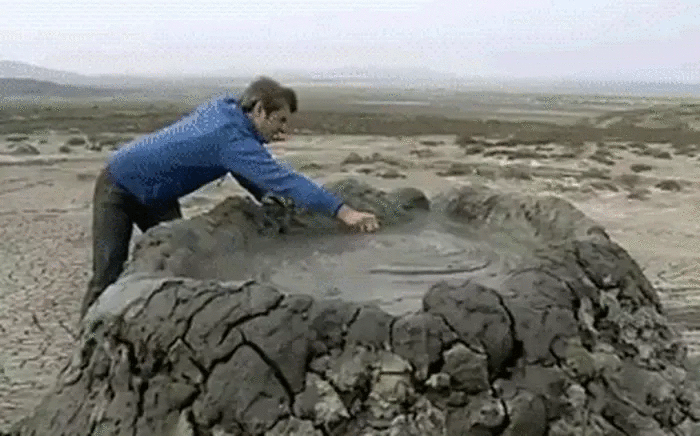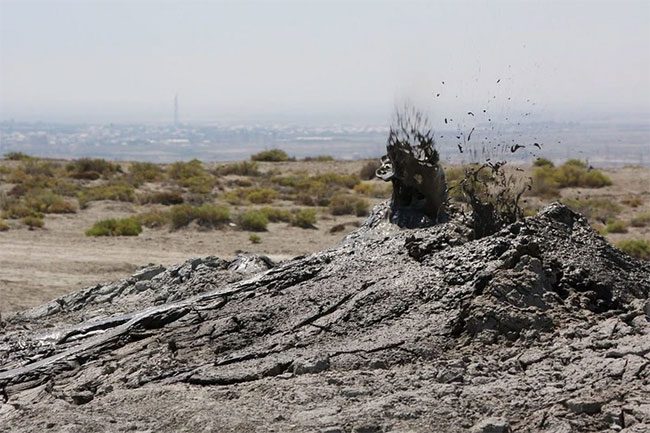The American travel magazine Atlas Obscura reported that in 2001, an astonishing event occurred in Azerbaijan. The ground began to move in unusual ways…
Mud Volcanoes
“It looked like a creature was struggling to break through the ground…. There was a loud explosion and a massive fire began to erupt from the hillside… The flames were so large, reaching about 300 meters high. They were surrounded by thick black smoke and a lot of mud being thrown into the air,” a local resident recounted.

Mud Volcano.
The incident was visible from about 15 kilometers away, and three days later, the fire was still raging.
What occurred was an eruption, not of magma, but of mud.
There are currently over 1,000 mud volcanoes in the world, with about 400 located along the coast of Azerbaijan.
Mud volcanoes form in places where underground gas pockets find a way to escape to the Earth’s surface. Unlike conventional volcanoes that erupt magma, mud volcanoes are typically cold, often just above freezing.
Mud volcanoes also never reach the size of regular volcanoes. Their sizes vary significantly. Most are quite small and cone-shaped. The largest mud volcanoes in the world are Boyuk Khanizadagh and Turaghai, both located in Azerbaijan.
Every 20 years or so, one of these mud volcanoes will erupt deep below the surface, resulting in a large explosion. However, they generally pose no danger to humans as they are far from most urban centers.
Azerbaijan’s “Natural Wonders”
In addition to the visible mud volcanoes, there are also dormant mud volcanoes underground and offshore mud volcanoes. There are over 140 offshore mud volcanoes in the Caspian Sea.

Mud volcano attracting tourists in Azerbaijan. (Photo: Atlas Obscura).
Eight islands in the Baku archipelago were formed by mud volcano eruptions. It is believed that these mud volcanoes have been active in Azerbaijan for about 25,000 years.
Typically, a mud volcano eruption begins with rumblings beneath the surface, followed by a strong explosion. The gases released will ignite and catch fire. The flames can reach heights of up to 1,000 meters, as seen with the Garasu mud volcano.
Reports indicate that 50 mud volcanoes have erupted approximately 200 times since 1810 in Azerbaijan. Lock-Batan Mud Volcano has erupted 19 times during that period. Mud volcanoes release mud, solid rock fragments, gas, and water.
The eruptions of mud volcanoes contain over 100 minerals and up to 30 trace chemical elements such as barite, mercury, manganese, copper, barium, strontium, and lithium.
The origins of mud volcanoes are related to buried hydrocarbon deposits. Rich oil and gas reserves have also been discovered in areas where mud volcanoes are formed. The mud ejected by these volcanoes is used as a raw material in the medical field.
Azerbaijan considers mud volcanoes as “natural wonders,” greatly attracting tourists.


















































